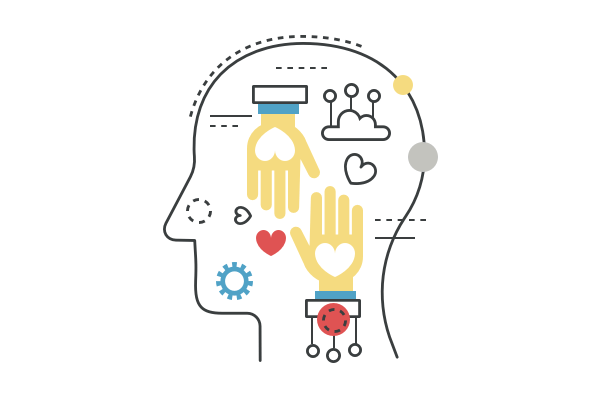If you want to build a successful business, you have to understand the needs of your customers–not just how they buy your products, but above all their emotional state, their pain points, and their dreams.
This will help you improve multiple things, including your products and services thanks to which your business earns money, marketing, which focuses on the usefulness of the content for the target group, and extraordinary positioning. As a result, you can create added value and, in the best-case scenario, become irreplaceable for your customers.
Empathy is extremely important if you want to build more meaning into your business, as it allows you to see the world through the eyes of your customers and understand their feelings. Empathic entrepreneurs are usually more successful in the long term because they truly understand their customers, inspire them, and turn them into fans.
What Exactly is an Empathy Map
An empathy map is a simple yet very effective tool to collect perceptions of assessment and emotions of your target group.
In the past few years, creating a buyer persona has become the standard method for clearly aligning the company’s offer to the needs of its target group.
Quantitative surveys, qualitative surveys–all of this is necessary for well-founded personas and can take several months to complete. How does that fit together with agile projects and design sprints that are only planned for a week or two?
After all, the buyer persona should be based on data and not on your own imagination. The method is therefore relatively complex and time-consuming.
Empathy maps work differently because data no longer plays a key role here. It is more about putting yourself in the shoes of a prototypical customer and capturing his or her feelings, thoughts, and actions. Thus, the main focus is on empathy.
When to Use an Empathy Map
The use cases of empathy maps are essentially identical to those of the buyer persona. Both methods will help you better understand your target audience. The insights of the map are valuable for every division of the company.
By using an empathy map, you will be able to better align your brand with customer needs.
How to Create an Empathy Map
Nowadays, there is an updated version of the empathy map. In order to understand the customer’s perspective, you need to learn how the customers see, hear, think, and feel.
And if you want to fill out the map in a meaningful way, determine a context in which you want to depict the customer perception. Should the situation of a potential customer be viewed in general? Or is it about the experience on your website?
Step 1: Define a Goal
Defining a goal that you want to achieve with the map will help you understand the context and purpose of the whole process.
Step 2: Identify Your Customer
As with the customer persona, you need to start with a specific person from your customer segment. If you have several segments, you need an empathy map for each customer from the respective segment. The best choice would be to pick a person who you already know.
Another option is to put your photo in the middle of the empathy map. That would make the emotional connection easier.
You should also ask yourself these questions:
- What do I know about this person?
- What situation is the person in?
- What is the role of the person in this situation?
The last two questions are particularly important. As soon as you answer them, you’ll be able to find out where your customer is at the moment and what you can do to help him/her out. Another good idea is to look at some customer journey map templates to have a better understanding of what the client is feeling at particular moments.
Step 3: Put Yourself in Your Customer’s Shoes
The next step is to understand what it feels like to be the customer in their specific situation. This is when you need to write down all of the possible insights. Try to see the person’s world through their eyes by asking yourself the following questions:
- What does the person see in your product?
- What was he/she talking about?
- What is he/she reading and looking at?
Step 4: Analyze All of the Collected Data
After you have defined a goal for your analysis in the first step, identified the customer in the second step, and the situation in which they find themselves in the third step, you have thus laid the foundation for the most important aspect of the empathy map: what is going on in your customer’s head?
Now it is all about their pain points and dreams. If you have previously dealt with how they perceive the world from a sensory point of view, you can now put yourself in their emotional position much better.
The biggest question here is:
- What fears and frustrations do your customers have and what is holding them back?
Ideally, you need to create an empathy map as part of a team workshop. That will help you collect as many assessments as possible.
Final Words
It takes about 20 minutes for David Gray (the one who invented the empathy map) to create a traditional empathy map. So it doesn’t take much time. The prerequisite, however, is that the participants should at least roughly know the target group that needs to be described. And if you have collected some useful data from surveys, you should share it in advance.
Follow Technoroll for more!
Editorial Staff of the TechnoRoll, are a bunch of Tech Writers, who are writing on the trending topics related to technology news and gadgets reviews.




